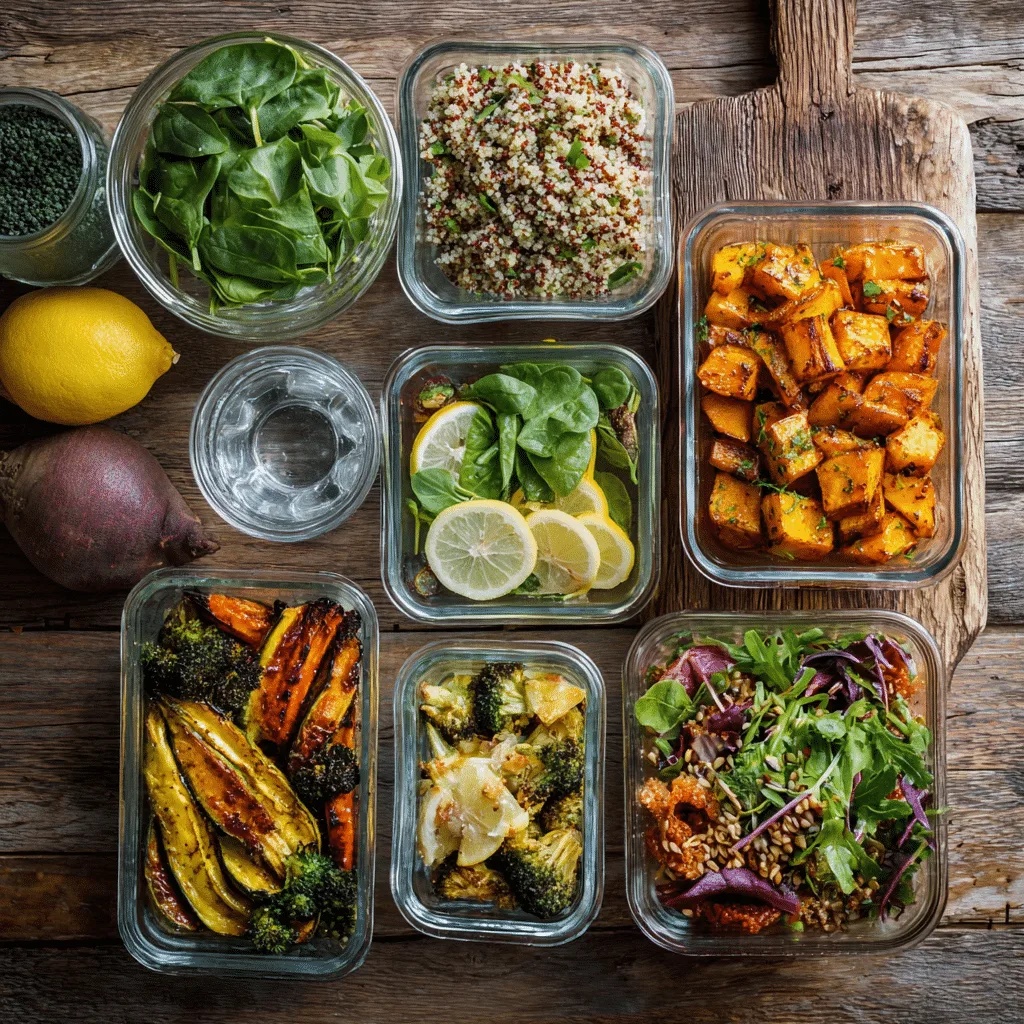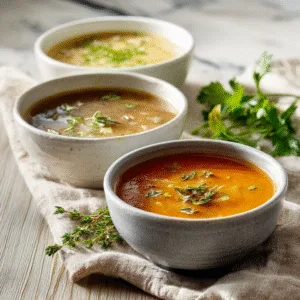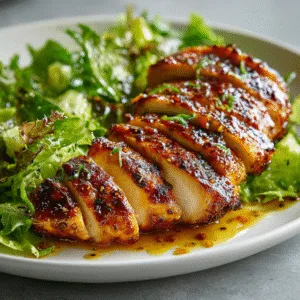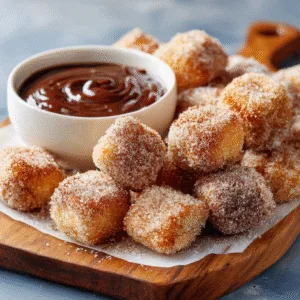If you’ve ever stood in the grocery store wondering what “clean eating” really means, you’re not alone. Creating a clean eating meal plan doesn’t have to be restrictive or complicated—it can be deeply satisfying and totally doable, even with a busy life. In this guide, we’ll explore the what, why, and how of clean eating, plus provide a practical, beginner-friendly 5-day plan packed with delicious whole foods. Whether you’re just starting out or ready to refresh your habits, you’ll get everything from food lists and prep tips to flexible ideas that make eating clean feel empowering—not overwhelming.
Table of Contents
Table of Contents

Clean Eating Meal Plan: A Real-Life Start to Eating Clean
The kitchen memory that started it all
I still remember the first time I tried to follow something like a clean eating meal plan. I was standing in my sunlit kitchen in Asheville, staring at a pile of vegetables that didn’t seem to belong to any recipe I knew. My daughter, curious as ever, asked, “What are we making?” And honestly—I didn’t know. But I did know I wanted to feed my family better, real food that felt good in our bodies.
Growing up, our dinners came from boxes and cans. I didn’t even taste fresh spinach until I was in my 20s. But once I started exploring clean eating, I realized how incredible food could taste when it was prepared simply—without loads of preservatives, sugar, or sodium. That first week wasn’t perfect. We had a few flops and plenty of improvising. But we also had wins, like roasted sweet potatoes that everyone devoured and smoothies packed with real fruits and greens.
This journey toward a clean eating meal plan wasn’t about becoming a nutritionist overnight. It was about showing up with intention and learning how to build meals that nourish. Clean eating doesn’t mean cutting everything out or becoming rigid. It’s about choosing whole, minimally processed foods—fruits, vegetables, lean proteins, and healthy fats—and cutting back on added sugars, refined grains, and packaged snacks.
What helped me most was having a plan I could rely on. Something simple, structured, and supportive. You can start with one clean meal a day, or try a few of the easy meals we’ve listed to stay consistent without stress. Need ideas for your mornings? These healthy breakfast recipes will help you kick off your day with energy and intention.
In this guide, I’ll walk you through how to create a clean eating meal plan that’s practical, tasty, and built for real life—not perfection. Whether you’re looking to fuel better workouts, improve digestion, or simply feel more in control of your plate, you’re in the right place.
Why Clean Eating Meal Plans Make a Real Difference
Clean eating fuels more than just your body
When I first committed to a clean eating meal plan, I noticed something surprising—not only was I feeling more energized, but my mood also improved. That constant 3 p.m. crash? Gone. My digestion? Better. I wasn’t chasing some ideal body; I just wanted to feel good again. Clean eating gave me that.
This way of eating focuses on whole, nutrient-rich foods. We’re talking about colorful vegetables, whole grains like brown rice and quinoa, high-quality proteins (think grilled chicken, lentils, wild-caught salmon), and healthy fats like avocado or olive oil. These ingredients don’t just satisfy hunger—they support better heart health, blood sugar regulation, improved gut health, and even clearer skin.
There’s also the bonus of increased fiber intake, which helps reduce bloating and keeps things, well, moving. Plus, meals packed with protein and healthy fats tend to leave you feeling full longer, helping reduce mindless snacking. That’s exactly what made my mornings easier—pairing a smoothie with nut butter and flax instead of just cereal made a noticeable difference. (If you’re just getting started, check out this nutrient-rich green detox smoothie that’s been a favorite in our house.)
The clean plate model: Building a balanced foundation
You don’t have to overthink it. The clean eating plate model is simple. Half your plate should be filled with non-starchy vegetables—think spinach, peppers, or broccoli. A quarter should hold whole grains like quinoa or farro, and the last quarter, lean proteins such as tofu, eggs, or grilled fish. Add a spoon of healthy fat like tahini or olive oil and a glass of water or herbal tea. Done.
This visual method takes the guesswork out of planning. It also aligns with strategies I used when planning weight-loss smoothies—meals that not only support metabolism but actually taste great.
Unlike restrictive diets, a clean eating meal plan emphasizes abundance over limitation. It celebrates flavor, color, and variety. Once you start eating this way, your body will begin craving the good stuff naturally—and it won’t feel like a diet. It’ll feel like freedom.

Clean Eating Meal Plan Food List: What to Eat & What to Avoid
Whole foods to focus on in your clean eating plan
Starting a clean eating meal plan is easier when you know what your kitchen should be stocked with. You don’t need fancy superfoods or expensive powders—just real food in its closest-to-natural form.
Here’s a simple breakdown of clean eating staples:
| Food Group | Clean Eating Examples |
|---|---|
| Vegetables | Spinach, kale, carrots, broccoli, bell peppers |
| Fruits | Berries, apples, bananas, citrus, avocado |
| Whole Grains | Brown rice, oats, quinoa, farro, whole wheat bread |
| Proteins | Chicken breast, eggs, tofu, lentils, beans, fish |
| Healthy Fats | Olive oil, nuts, seeds, tahini, natural peanut butter |
Adding these to your weekly grocery haul sets you up for success. If you’re unsure how to turn these into meals, browse our easy meals section for inspiration that doesn’t involve hours in the kitchen.
Foods to limit or avoid completely
Clean eating doesn’t mean perfection, but some items are better left on the shelf. A clean eating meal plan avoids foods that are overly processed or contain long ingredient lists with additives you can’t pronounce. That includes:
- Packaged snacks (chips, crackers with additives)
- Sugary cereals and flavored yogurts
- Refined white flour and white bread
- Frozen dinners with sauces and preservatives
- Sodas and sugar-loaded juices
Label reading becomes a powerful tool here. If sugar, high-fructose corn syrup, or hydrogenated oils are listed in the first few ingredients—skip it. Instead, look for brands with short ingredient lists you recognize.
Want something sweet but still clean? Try a banana “ice cream” made by blending frozen bananas with a splash of vanilla—one of my kids’ favorite desserts from our dessert collection.
Swapping gradually is key. Replace white rice with brown, soda with sparkling water, and sugary cereal with oats topped with berries. These small shifts add up and become second nature.
Beginner Clean Eating Meal Plan You Can Actually Stick To
Simple 5-day structure to get started
If the idea of creating a clean eating meal plan from scratch feels overwhelming, don’t worry—I’ve got you. When I first started, I didn’t try to reinvent dinner. I took what we already liked and made clean swaps: roasted instead of fried, fresh over frozen, natural instead of processed.
Below is a sample 5-day clean eating meal plan that’s beginner-friendly, nutrient-packed, and totally doable with a regular grocery list. This isn’t about strict rules. It’s a flexible foundation to guide your meals throughout the week.
5-Day Clean Eating Sample Plan
| Meal | Example |
|---|---|
| Breakfast | Oatmeal with almond butter, banana, chia seeds |
| Snack | Carrot sticks + hummus or a boiled egg + avocado toast |
| Lunch | Grilled chicken salad with olive oil vinaigrette + brown rice |
| Snack | Apple slices with almond butter or a green smoothie |
| Dinner | Baked salmon, quinoa, steamed broccoli with lemon |
This sample plan hits all the essentials: whole foods, healthy fats, and quality protein. You can mix and match ingredients or repeat favorites. If you want to supercharge your mornings, these weight-loss smoothie ideas fit perfectly within clean eating.
Make it flexible and family-friendly
Clean eating isn’t just for solo foodies—it’s family-friendly when done right. Kids may love sweet potato fries, baked chicken tenders, or fruit parfaits made with unsweetened Greek yogurt. My picky eater? Totally into “rainbow wraps”—whole-grain tortillas packed with veggies, hummus, and shredded chicken.
Don’t be afraid to repeat meals or prep in bulk. Doubling up on grilled protein or roasted vegetables can save time and prevent last-minute takeout temptations.
Want more quick prep-friendly options? Check out our healthy breakfast ideas and discover clean, simple ways to start the day right.

Smart Habits to Make Your Clean Eating Meal Plan Stick
Start small, stay consistent
One of the most common reasons people give up on a clean eating meal plan is because they try to change everything at once. I’ve been there—I emptied my pantry in one day, bought every “clean” item I could find, and ended up feeling overwhelmed (and overspent). Sustainable change doesn’t come from extremes. It comes from small shifts.
Start with one clean meal a day. Make breakfast count—try steel-cut oats, a boiled egg, or a green detox smoothie. Focus on hydration and build from there. Within a week or two, you’ll naturally find yourself reaching for healthier options.
Another helpful habit? Plan your meals every Sunday. Sit down with your calendar and map out dinners. Keep your grocery list short and focused: proteins, veggies, grains, and pantry staples. And don’t forget to prep a couple of grab-and-go snacks like roasted chickpeas or trail mix.
Budget-friendly clean eating is absolutely possible
Clean eating gets a bad rap for being expensive, but with the right strategies, it can be surprisingly budget-friendly. Shop seasonal produce, buy grains like oats and rice in bulk, and choose frozen veggies over fresh if needed—they’re just as nutritious and often cheaper.
Batch-cook your grains and proteins. A big pot of quinoa and a tray of roasted chicken can become salads, wraps, or warm bowls throughout the week. I’ve saved time, money, and stress by prepping this way.
Don’t forget, clean eating includes room for comfort foods too—especially when they’re homemade. You’ll find wholesome comfort recipes in our easy meals collection that satisfy without the extra sodium or sugar.
Building sustainable habits isn’t about being perfect—it’s about showing up consistently, with grace and flexibility. The more prepared you are, the less likely you’ll fall back on old habits.
Portion Control & Budget Awareness in Your Clean Eating Meal Plan
How to build balanced plates without calorie counting
Clean eating isn’t just about what’s on your plate—it’s also about how much of it is there. When I first started following a clean eating meal plan, I didn’t want to obsess over calories or track every bite. Instead, I learned to focus on visual cues and natural hunger signals.
A great rule of thumb is the Healthy Eating Plate method, inspired by Harvard’s nutrition guidance. Half your plate should be non-starchy vegetables (like broccoli, peppers, or leafy greens), one-quarter should be lean protein (such as grilled chicken, beans, or tofu), and the remaining quarter should be whole grains (like quinoa, brown rice, or whole wheat pasta). Add a tablespoon of healthy fat and you’ve got a balanced, clean meal.
If you’re including smoothies or bowls as part of your routine, be mindful of portions there too. A weight-loss smoothie can quickly turn into a high-calorie dessert if it’s overloaded with nut butters or dried fruits.
Use smaller plates when possible and pause halfway through meals to assess your hunger. These small strategies make a big difference over time.
Eating clean without draining your wallet
Clean eating has this reputation of being pricey—but that’s mostly marketing. You don’t need fancy powders or expensive produce shipped from halfway across the world. With a little planning, your clean eating meal plan can be frugal, efficient, and deeply satisfying.
Here are some of my favorite cost-saving strategies:
- Buy whole ingredients like dry beans, oats, and bulk brown rice.
- Shop the frozen aisle for nutrient-rich veggies like spinach, broccoli, and cauliflower rice—often cheaper than fresh and just as clean.
- Pick in-season produce for better flavor and price.
- Avoid single-serve items. Prep your own snack packs at home.
And for days when you need simplicity and speed? Turn to our easy clean meals that use pantry staples and require minimal prep.
Tracking what you spend and prepping meals ahead of time doesn’t just save money—it helps eliminate food waste, which is a huge bonus when working toward more mindful, intentional living.
Make It Yours: Customizing a Clean Eating Meal Plan That Fits
One size doesn’t fit all—and it shouldn’t
When I started my clean eating journey, I tried to mimic other people’s routines. I followed every tip, bought every suggested item, and guess what? It didn’t work. I learned that a clean eating meal plan is most powerful when it reflects your life—not someone else’s.
Are you vegetarian? Gluten-sensitive? Juggling picky eaters? All of that matters. Clean eating isn’t about sticking to rigid menus—it’s about building meals around whole, clean ingredients that work for your body and your family.
If you’re plant-based, lean into lentils, tofu, quinoa, and hearty greens. For gluten-free eaters, swap in brown rice, sweet potatoes, and gluten-free oats. You don’t have to sacrifice flavor or flexibility.
The beauty of clean eating is in its adaptability. You can rotate different protein sources, use seasonal produce, and even sneak in a treat once in a while. (We keep frozen grapes or homemade fruit pops in our freezer for dessert cravings!) Clean eating includes balance, not perfection.
Want something refreshing between meals? Try a green detox smoothie—it’s flexible and can be modified for different diets.
Tips for real-life scheduling and meal prep
Let’s face it—life gets busy. Between work, school runs, and unexpected chaos, having a perfectly prepped fridge every week isn’t realistic. But with a few tricks, your clean eating meal plan won’t fall apart.
Here’s what works for me:
- Double batch everything: Cook once, eat twice. Leftover quinoa becomes a base for salad bowls the next day.
- Chop all your veggies at once: It saves time mid-week.
- Use base meals: Think protein + veggie + grain, then mix up sauces and toppings for variety.
- Build a go-to meal rotation: Having 4–5 clean meals you love makes planning way easier.
If you’re feeling uninspired midweek, check out our healthy breakfast ideas to reboot your momentum. Sometimes a good start is all it takes to get the rest of the day on track.
Clean eating isn’t about eating perfectly. It’s about eating with purpose, one meal at a time, in a way that feels natural for you.
Meal Kits That Make Your Clean Eating Meal Plan Easier
Clean eating doesn’t have to mean cooking from scratch daily
Let’s be real: there are weeks when you’re just too tired to prep, plan, or cook from scratch. Clean eating sounds good in theory—until you’re staring into an empty fridge at 6 p.m. That’s where clean-focused meal delivery kits come in.
These aren’t your average microwave dinners. Many brands now offer meals made with organic produce, whole grains, and high-quality proteins—all without added sugars, preservatives, or fillers. They’re designed to help you stay on track with your clean eating meal plan, even when time isn’t on your side.
Some meal kits I’ve tried and liked include:
- Green Chef: USDA-certified organic, with clean keto, plant-powered, and balanced plans.
- Purple Carrot: Vegan-based with hearty, whole food ingredients.
- Daily Harvest: Smoothies, bowls, and flatbreads made with organic vegetables and superfoods.
If you’re exploring smoothies as part of your plan, services like Daily Harvest can be a convenient complement to your weight-loss smoothie rotation, especially when mornings get hectic.
How to choose a clean meal kit that actually fits your goals
Before you hit subscribe, check ingredient labels and brand commitments. Look for terms like non-GMO, no added sugars, minimally processed, and organic produce. You’ll also want to be sure that meals aren’t overloaded with sodium—a common issue in pre-prepped meals.
Ask yourself:
- Does this kit align with my dietary style (gluten-free, vegan, low-carb)?
- Are the ingredients recognizable and whole?
- Can I customize the meals based on my needs?
Even if you use meal kits only two or three nights a week, they can give you breathing room and help you avoid falling back into ultra-processed food habits. And if you’re still craving homemade comfort, check out our easy clean dinner ideas to fill in the rest of the week with simple, satisfying options.
Convenience doesn’t have to cancel out clean eating. With the right tools and choices, your clean eating meal plan can stay delicious, realistic, and sustainable—no matter how busy life gets.
FAQs About Clean Eating Meal Plans
1. What is the clean eating meal plan?
A clean eating meal plan focuses on whole, minimally processed foods. It includes fruits, vegetables, whole grains, lean proteins, and healthy fats while avoiding added sugars, refined carbs, and processed ingredients. Instead of counting calories or eliminating food groups, it emphasizes quality and simplicity—helping you fuel your body with nutrient-rich meals every day.
What foods are included in clean eating?
Clean eating includes foods that are as close to their natural state as possible. Think leafy greens, berries, legumes, eggs, wild-caught fish, brown rice, quinoa, nuts, and seeds. You can build balanced meals using simple ingredients like grilled chicken, roasted sweet potatoes, and sautéed vegetables. Clean snacks include apple slices with almond butter or homemade energy balls.
3. Can I lose weight with a clean eating meal plan?
Yes, many people naturally lose weight when they follow a clean eating meal plan because they’re cutting back on processed foods, added sugars, and empty calories. Clean meals tend to be higher in fiber and protein, which keeps you full longer and reduces cravings. Combined with portion awareness and regular movement, clean eating can support healthy, sustainable weight loss.
4. Is clean eating expensive?
Clean eating doesn’t have to break your budget. With the right strategies—like buying in bulk, choosing in-season produce, and cooking in batches—it’s totally affordable. Shopping smart and sticking to basics (like oats, beans, and frozen vegetables) can lower your grocery bill. Meal planning also helps reduce waste and saves money long-term.




